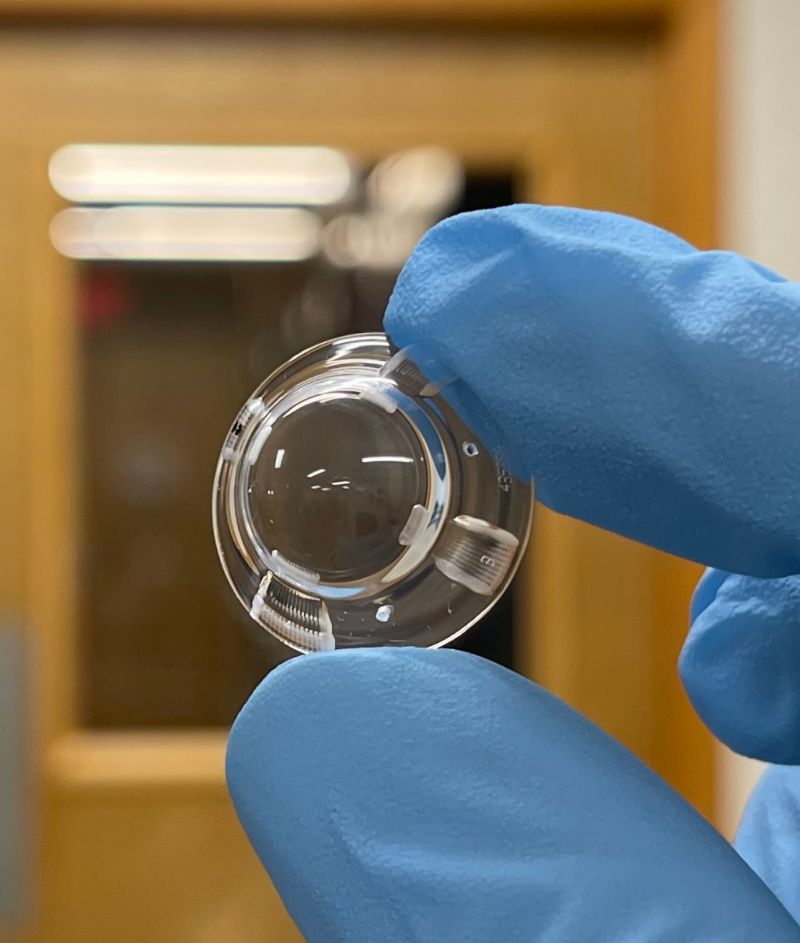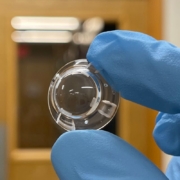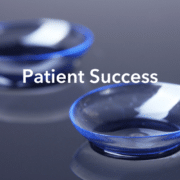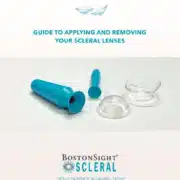Stephanie works as a nurse and needs excellent vision to do her job. But Stephanie has keratoconus, a progressive condition where the cornea thins and bulges outward, forming a cone shape, and causing visual distortion. She was at the point in her disease where she had to close her left eye to focus her right eye on tasks like drawing syringes and inserting intravenous needles.
Stephanie was diagnosed with keratoconus in eighth grade, more than 40 years ago. The condition can be genetic and both Stephanie’s mother and sister have the condition, too.
Starting with RGPs
When she was first diagnosed, scleral lenses were unavailable, so Stephanie was prescribed rigid gas-permeable (RGP) contact lenses to help modify the bulging cone shape of her cornea. An RGP lens may be used for keratoconus due to its rigidity. The vision can be corrected by compensating for the distorted cornea because they don’t mold to the cornea like a soft contact lens.
Corneal Cross-linking
She used RGPs until 2017 when her local optometrist referred her to Dr. Scott Drexler, an optometrist in Pennsylvania specializing in corneal diseases. Stephanie was referred to Dr. Drexler for corneal cross-linking (CXL) surgery on her left cornea, which was getting worse. CXL is a minimally invasive outpatient procedure designed to strengthen the cornea and halt the progression of keratoconus. However, due to the severity of her condition, her left eye was inoperable. While her right eye was a good candidate for the procedure, there was concern that Stephanie would be without good eyesight if things went wrong.
Scleral lenses before BostonSight SCLERAL
Once CXL was no longer an option, Dr. Drexler chose to prescribe Stephanie a scleral lens to treat her keratoconus in both eyes. The scleral lens covers more surface area of the eye, resting on the sclera, or ‘white of the eye’, rather than the cornea. This creates a more stable lens that is more comfortable to wear long-term than an RGP lens.
However, the scleral lenses constantly had issues, which prevented Dr. Drexler and Stephanie from reaching the right fit or comfort level. Stephanie spent two years in the fitting process with the same lenses as there were few scleral lens options available at that time.
Success with BostonSight SCLERAL
Then, in 2019, Dr. Drexler switched Stephanie to BostonSight SCLERAL, a newer scleral lens brand, and “that’s where the miracle started,” she says. It took only a few appointments for Stephanie to reach her final fit with BostonSight SCLERAL.
“He got the fit to where it is perfect, close to perfect like no other. I have no fogging and with Hydra-PEG [coating], I am able to see. [Hydra-PEG is a clear coating that covers your lenses. It helps protect the lens making it last longer, and is used to prevent damage, dryness, and fogging from the lens] My first pair of BostonSight SCLERAL lenses was ten times better than the other scleral lenses I was originally fit with. They are perfect.”
Stephanie can wear her BostonSight SCLERAL lenses up to 14 hours a day with no problems. With her lenses, she is 20/30 in her right eye and can see significantly better in her left eye. She no longer needs to use one eye to compensate.
“At work, I had to close my left eye and use my right eye only to focus on what I was looking at. With BostonSight SCLERAL, I can have both eyes open and see. It’s a miracle how much I can see with my BostonSight SCLERAL lenses.”








